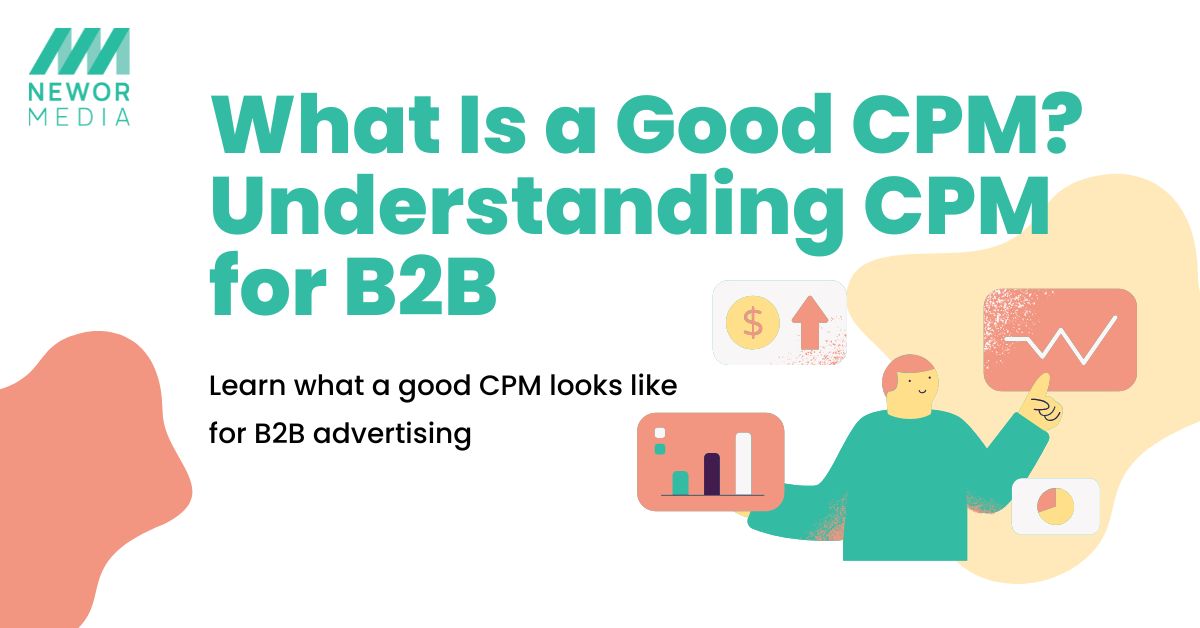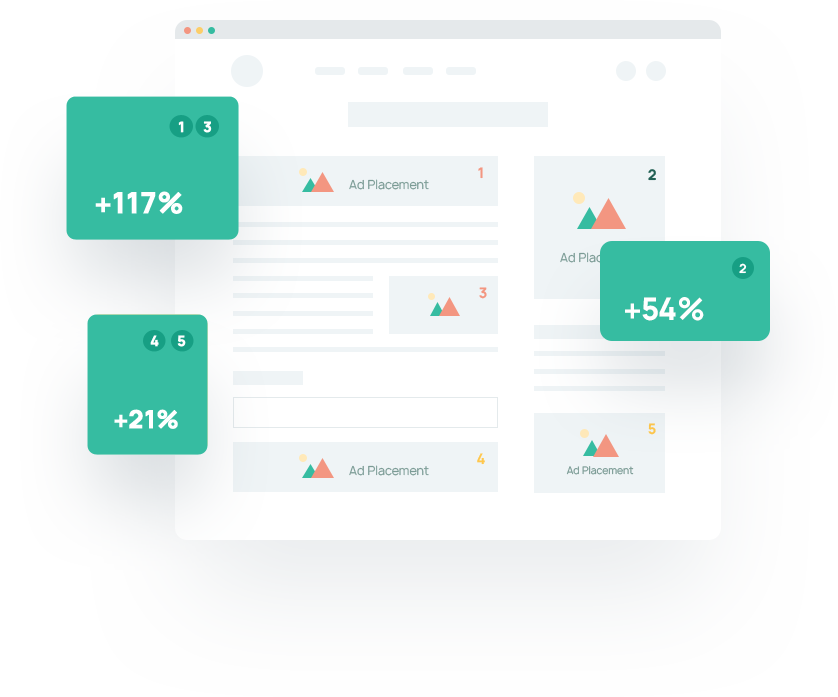When you’re running digital ad campaigns, one of the first metrics that comes up is CPM. Whether it’s Google Ads, LinkedIn, or programmatic platforms, CPM is the baseline most advertisers start with. But what’s considered a good CPM—especially in B2B—can vary quite a bit.
In this post, we’ll walk through what CPM really means, how it plays out in B2B campaigns, what typical benchmarks look like, and how you can make sure your ad spend is actually working hard for your business.
What Does CPM Actually Mean?
CPM stands for “Cost Per Mille” (mille = 1,000 impressions). So, when a platform tells you the CPM is $25, that means you’re paying $25 for every 1,000 times your ad is shown.
It doesn’t matter if someone clicks—CPM is all about visibility. That’s the reason why it is used for a brand awareness campaign or campaigns targeted at high-value audiences.
What Is a Good CPM for B2B?
There’s no universal answer to this question. A “good” CPM is based on these factors:
- The industry
- The platform
- Targeting
- Campaign objective
However, here are some average ranges for B2B CPMs across major platforms:
Estimated CPM Benchmarks for B2B:
| Platform | Typical B2B CPM Range |
| Google Display | $3–$8 |
| LinkedIn Ads | $30–$60+ |
| Facebook Ads | $6–$12 |
| Twitter Ads | $5–$10 |
| Programmatic | $2–$20 |
In B2B campaigns, the cost is high as you are paying for precise targeting and hence the CPM range for LinkedIn seems expensive. If your goal is to reach out to VPs, CMOs, or decision-makers of the organisation, then the higher CPM is worth every penny.
CPM vs. Other Ad Metrics
Through CPM, you can understand that you are paying for visibility. However, does this visibility transform into a conversion? Here’s a quick look at how each metric serves a different purpose.
| Metric | What It Measures | Best For |
| CPM | Cost per 1,000 impressions | Brand awareness, early-stage campaigns |
| CPC | Cost per click | Traffic-driving campaigns |
| CPA | Cost per acquisition | Lead gen, sales conversions |
| CTR | Click-through rate | Gauging ad engagement |
For B2B campaigns, CPM is highly effective at the top of the marketing funnel. In the later stages of the campaign, CPC or CPa will turn out to be more fruitful in terms of performance.
How to Maximize CPM in B2B Campaigns
Even if your CPM is on the higher end, that doesn’t mean your campaign isn’t effective. It all comes down to how well those impressions are being used.
Few quick tips to get the best out of your CPM:
1. Precise Targeting
For B2B campaigns, the quality of your audience segment matters more than the target audience size. Use filters like job title, company size, industry, and seniority to narrow down your target audience. This will visibly reduce wasted ad impressions and better the quality of exposure for the ad.
2. Test Ad Creatives
Regularly play around with the creative assets and the ad copies as it can help you understand the impact on CTR and engagement. Using A/B testing practices will help to identify which pattern works and generate better engagement and effectiveness.
3. Cap Your Frequency
Make sure that you have set frequency caps to ensure there is no ad fatigue or over-delivery. Showing the same ad 20 times to the same person will not lead to better results.
4. Funnel Stage Alignment
Change your ad pricing strategies according to the campaign objective and the marketing stage. Using CPM campaigns for brand awareness at the top of the funnel will bring in better results but as the users move down the funnel, a shift to CPC or CPA campaigns will be more beneficial.
Why CPM Is Still Relevant in B2B Campaigns
CPM is often looked at as a “vanity metric” but it plays a crucial role in long B2B sales cycles.
CPM can be particularly useful for the following:
- Brand Visibility: The first step to conversion is getting noticed by users and building awareness.
- Retargeting Setup: Initial impressions play a pivotal role in framing the retargeting lists which includes your best performing audience segment.
- Content Distribution: Whitepapers, reports, or thought leadership pieces benefit from broad exposure.
- Event Promotion: CPM helps in event promotions by quickly spreading the word amongst the right crowd.
To sum it up, CPM isn’t the only strategy, but it is an essential tactic of a wholistic B2B marketing campaign.


One Comment
Comments are closed